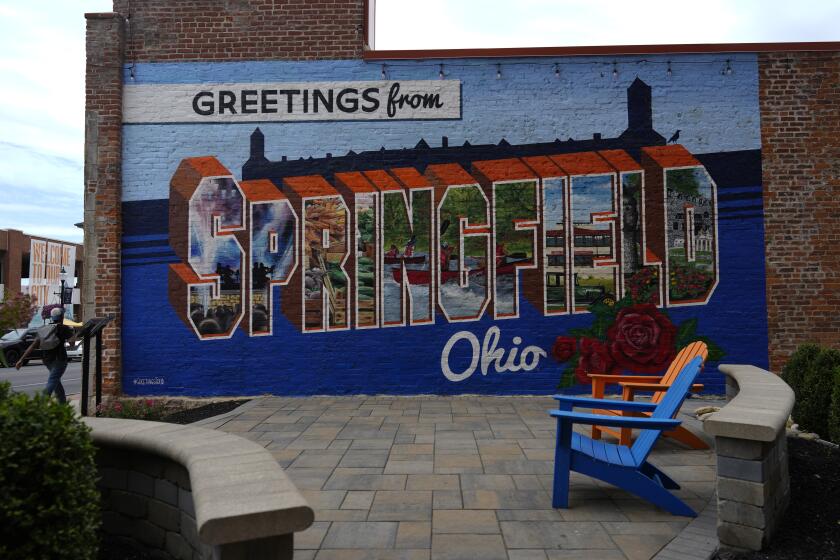Editorial: Los Angeles passed Measure HHH, but there are still hurdles ahead for housing homeless people
Last week, Los Angeles voters overwhelmingly approved an ambitious measure that would authorize $1.2 billion in bonds to pay for the construction of 10,000 units of housing for homeless people. Measure HHH passed with a resounding 76% of the vote, as voters agreed to increase their own property taxes to help the city’s most vulnerable people. This is an enormous victory for the city officials who crafted and pushed for the measure, the nonprofit organizations that supported it and the voters who recognized that ignoring people sleeping on the sidewalks was not a solution to this growing problem.
Now, let’s keep the momentum going.
There are already permanent supportive housing projects for homeless people that have been designed and are awaiting city approval. The city should consider these projects expeditiously and give approval, if appropriate, so the city can make its commitment of HHH funds. That commitment — which will be about a third of the capital costs — will let developers get started on raising the other funds necessary to build.
It will now be up to developers to work with neighborhoods on the types of permanent supportive housing that best fit the communities.
In addition to those projects, Miguel Santana, the city administrative officer, is expected to recommend this week that permanent supportive housing be built for homeless people on most of the 12 city-owned parcels of unused or underused property that his office identified months ago as suitable. He will propose specific developers to begin building on the sites, based on their proposals and qualifications. The city won’t dictate to the developers the size or look of the projects. It will now be up to developers to work with neighborhoods on the types of permanent supportive housing that best fit the communities. The only way to get communities on board is to involve them in the planning of these developments. That long and challenging process should start immediately.
Weeks before the vote on HHH, L.A. county health department officials promised that they would provide the wraparound therapeutic services that are an essential part of permanent supportive housing. The county has said it will sign a memorandum of understanding with the city committing to this; it should do so as soon as possible.
The county should also strongly encourage other cities in the county with sizable homeless populations to fulfill their obligation to provide housing for homeless people. HHH will provide 10,000 units in a city whose estimated homeless population is 28,000. But there are nearly 47,000 homeless people in Los Angeles county. This is not L.A.’s burden alone.
HHH also requires that a citizens oversight committee be established to weigh in on projects. The city council needs to determine what qualifications citizens should have before they are put on that committee and what powers they will have after they are on it. The members need to have a measure of independence from the council and be given the information they need to make meaningful recommendations.
This housing measure is a crucial part of the city’s strategy to tackle homelessness, but it is a slow-moving one. It will probably take years before the first units of housing are ready for occupancy. Meanwhile, short-term measures designed to help homeless people more quickly must also go forward. Yet a sobering report released recently by the city shows that things are not moving quickly.
Projects that should have been relatively easy to implement have been anything but. For instance, proposals to set up storage facilities in Venice and San Pedro where homeless people can store their belongings have stalled due to vehement community opposition. Proposals for “safe parking programs” where homeless people living in their vehicles could park overnight have yet to be approved.
If proposals like these face passionate community opposition, proposals for permanent housing are likely to be even more controversial.
Yet well-designed housing for homeless people is the only effective permanent way to get homeless people out of tents and off the sidewalks. City officials and homeless housing providers must intensify their efforts to convince Angelenos of this. And they must prepare for long, drawn-out discussions, negotiations and in some cases battles to make sure the projects move forward.
Los Angeles voters already took a brave step by voting for the bonds. Now, the money must be allowed to work. Let’s not stop housing before it gets built.
Follow the Opinion section on Twitter @latimesopinion and Facebook
More to Read
A cure for the common opinion
Get thought-provoking perspectives with our weekly newsletter.
You may occasionally receive promotional content from the Los Angeles Times.










